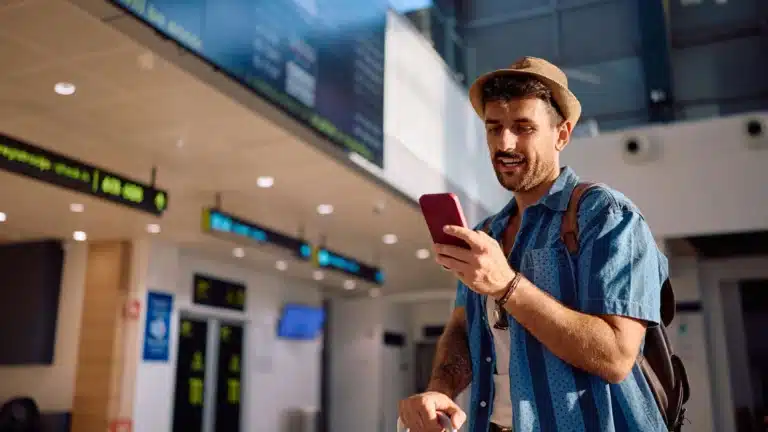Table of Contents
Most people think of tour guiding as working for a large company, waving a flag, and herding groups of forty people through crowded squares. However, by 2025, the landscape appears quite different.
Thanks to platforms like Airbnb Experiences and the rise of independent travel, locals with personality and storytelling skills can design small, intimate tours — sometimes just two hours long — and sell them directly to visitors.
This shift has created an exciting micro-hustle: tour guiding without the overhead of buses, offices, or giant marketing budgets. Instead, you map routes, design experiences, and invite travelers into stories only you can tell.
Done right, these routes can become reliable income streams that grow from a weekend hobby into a true side business. Here’s how to design, package, and sell routes that people will actually pay for.
Why Micro-Tours Are Having a Moment
Travel today isn’t just about seeing landmarks; it’s about immersion. Guests want experiences they can’t buy at a ticket booth: learning about street art from someone who knows the artists, eating at tiny restaurants off the beaten path, or hearing local legends told by a resident who grew up nearby.
Micro-tours are booming for a few reasons:
- Low cost of entry: You don’t need a license to drive a bus or thousands of dollars in equipment. A route map, comfortable shoes, and a little storytelling go a long way.
- Short and sweet: Two-hour experiences fit neatly into a traveler’s day without taking it over.
- Personal touch: Travelers are paying less for information and more for connection. A host who shares their personal story is more memorable than a generic audio guide.
- High repeatability: Once you create a solid route, you can run it repeatedly with new guests.
For side hustlers, this is a rare mix of flexibility, fun, and recurring potential.
Read related blog: How to Spend on Experiences, Not Just Things: Beem Finance Guide
How to Spot a Sellable Route
The difference between a good walk and a profitable tour is focus. A “wander through downtown” rarely sells. But “hidden coffee houses of Old Town” or “murals and music in the arts district” will catch attention instantly.
To test whether your idea works, ask yourself:
- Does it solve curiosity? If a guest Googles your city, could they find this on their own? If yes, refine it. If not, you may have gold.
- Can you structure it clearly? Sellable routes usually have 5–7 stops, each with a hook.
- Is there a sensory payoff? Food samples, great views, or photo opportunities add instant value.
- Is it achievable in 90–150 minutes? Any longer, and you risk fatigue. Any shorter, and people may not see the worth.
Some of the most consistent categories are:
- Food crawls that spotlight hole-in-the-wall spots.
- Photo walks are designed around the best Instagram angles.
- Historic or spooky night tours with gripping stories.
- Art, craft, or maker routes that end with a hands-on activity.
The more specific your theme, the easier it is to sell.
Mapping the Experience: From Draft to Flow
Mapping is where the hustle turns into a product. Walk your neighborhood as if you were a visitor. Where would you start? How far is too far? Does the street feel safe at night?
A good flow has:
- Defined start and finish points (near transport hubs or landmarks).
- Rhythm of stops: Alternate movement with moments of pause, so the group doesn’t tire.
- Story arc: An engaging hook, a middle full of surprises, and a satisfying finale.
- Time buffers: Always plan for extra minutes to account for late arrivals, photo stops, or restroom breaks.
A simple trick: walk the entire route at the same time of day you’ll guide it. You’ll notice things Google Maps won’t tell you, like noisy construction, closed shops, or hidden lighting that makes night tours atmospheric.
Read related blog: The Ultimate Guide to Affordable Solo Travel
Pricing That Feels Fair (to Guests and to You)
Many new guides undervalue themselves, thinking, “I’ll charge $10 to make sure I get bookings.” The problem? That price doesn’t cover your time, energy, or the hidden costs (such as tastings or transportation).
Here’s how to think about it:
- Benchmark locally: Check Airbnb Experiences and local tours for the best options. Price yourself in the middle to start.
- Consider prep time: If a two-hour tour takes you two hours to prep and coordinate, that’s four hours of work. Price accordingly.
- Add extras: A free map, a small snack, or a photo package justifies higher pricing.
A healthy range for small tours is $25–$60 per person, with private or VIP options increasing to higher rates. Guests often equate price with quality, so avoid competing on price alone.
The Unseen Work: Permits, Insurance, and Safety
Nothing ruins a tour faster than getting stopped by authorities mid-route. Depending on your city, you may be required to obtain a vendor license or a tour operator permit. Always check local rules, especially if you’re entering museums, bars, or private properties.
Other essentials:
- Insurance: Liability insurance protects you if someone trips or gets hurt. Many venues require proof before partnering.
- Accessibility notes: Please indicate if your tour involves stairs, uneven terrain, or physical activity. Transparency prevents complaints.
- Back-up plan: If it rains, do you have covered stops? If a shop is closed, do you have an alternate?
Safety and professionalism are silent sales tools. They don’t appear in ads, but they secure repeat bookings and earn strong reviews.
Storytelling: The Magic Ingredient
Facts are Google-able. Stories are what guests remember. A street corner becomes memorable when you explain, “This was once the meeting place for underground poets during the dictatorship.”
Storytelling tips:
- Have a theme: “The rebels of the city” or “the flavors of migration” creates coherence.
- Mix anecdotes with the big picture: Pair quirky personal tales with a larger context.
- Engage the senses: Smells, tastes, textures stick in memory more than dates and names.
- Involve guests: Ask them to spot details, guess answers, or share their impressions.
A tour without a story is a map. A tour with a story is an experience.
Read related blog: Group Travel Planning on a Micro-Budget
Marketing: Getting Your First Paying Guests
The best-designed tour is useless without visibility. Luckily, you don’t need a big budget.
- List on platforms like: Airbnb Experiences, Viator, or Eventbrite for fast entry points.
- Partner locally: Hotels, hostels, and cafés can refer guests for a commission.
- Social media: Short reels or TikToks showcasing a single highlight stop can drive bookings.
- Word of mouth: Offer discounts to locals for the first runs. Happy locals recommend you to visitors.
A guest’s journey often starts online. Ensure that your photos, descriptions, and reviews convey a clear and professional image.
Tools That Make the Job Easier
Guiding doesn’t need expensive equipment, but the right tools save headaches.
- Booking software, such as FareHarbor, or a simple Stripe/Calendly setup.
- Google Maps or Mapbox for custom route maps.
- A headset or small microphone for noisy streets.
- A good phone camera for capturing photos that also serve as marketing material.
Keep your toolkit lean. Professionalism is about reliability, not flashy gear.
Growing Beyond One Route
Once you have one solid tour, growth options multiply.
- Create seasonal variations (holiday markets, summer rooftops, night walks).
- Train another guide and split earnings.
- Expand to new neighborhoods.
- Develop digital versions: sell self-guided maps or recorded audio tours.
Scaling is about repeatability. If your first tour is successful, don’t reinvent the wheel; clone it with variations.
Read related blog: Travel Safety on a Budget: 10 Best Digital Tools
A Quick Guide to Profitable Route Types
| Route Type | Duration | Typical Price | Best Audience | Complexity |
| Food Crawl | 2 hrs | $30–$75 pp | Couples, groups, foodies | Medium |
| Photo Walk | 1.5 hrs | $20–$50 pp | Hobbyists, influencers | Low |
| History & Legends Walk | 2 hrs | $25–$60 pp | Families, culture fans | Medium |
| Brewery/Distillery Tour | 3 hrs | $40–$100 pp | Adults, craft lovers | High |
| Ghost/Night Walk | 1 hr | $20–$45 pp | Young adults, thrill-seekers | Medium |
The Psychology of Why Travelers Book Tours
People don’t book tours because they lack Google Maps. They book because they want connection, confidence, and context. A traveler walking alone might see an old building, but with you, they’ll hear the story of who built it, why it mattered, and how it shaped the city. That psychological shift, from “sightseeing” to “meaning-making”, is why even small, simple routes have selling power.
Creating Signature Moments in Your Route
Think of your tour like a stage play: it needs a climax. Maybe it’s watching the sunset from a hidden rooftop, tasting a family recipe at a tucked-away café, or unveiling a quirky street legend at just the right spot.
These “signature moments” are what guests retell afterward, turning them into your word-of-mouth marketers. Without a high point, even a well-mapped tour risks feeling forgettable.
Handling Weather and Unexpected Interruptions
Tours don’t always go to plan. Rain, closures, or unexpected events can derail the best route. Smart guides have “plan B” stops, like a café with an interesting story, a covered market, or a detour through an indoor gallery.
A flexible attitude turns interruptions into part of the adventure. Guests often remember how gracefully you handled surprises more than the hiccup itself.
Partnering With Local Businesses for Mutual Benefit
Partnerships are the secret sauce of profitable tours. A bakery might give you discounted samples in exchange for repeat customer flow. A gallery might welcome your group for free if it increases its visibility.
These alliances help keep your costs low while enriching the experience. Over time, partnerships can evolve into sponsorships, where businesses pay you to feature their products or services.
Using Reviews as Fuel for Growth
Reviews aren’t just feedback; they’re marketing gold. A single glowing review, such as “This was the highlight of our trip!” can convert dozens of future bookings. Make it easy for guests to leave reviews by following up politely with a direct link to the review page.
Highlight their testimonials on social media or in your listing description. The cycle is simple: deliver personal, memorable tours → collect reviews → attract more bookings → reinvest into better tours.
Read related blog: Travel Insurance: Do You Need It for Every Trip?
Beyond the Basics: Five Extra Angles
Designing for Different Travelers
Solo guests need social touches. Couples want intimacy. Families want rest stops. Corporate groups need precision. Tailoring your pitch to each group can significantly boost conversions.
Handling Refunds and Difficult Guests
Have clear cancellation policies and a calm, professional way of handling complaints. This protects your time and reputation.
Sustainability and Ethics
Respect neighborhoods: limit group size, avoid noise, and promote local businesses responsibly. Ethical tours stand out.
Measuring What Matters
Track bookings per month, average review score, and repeat customers. These metrics tell you what’s working far more than follower counts.
Turning Routes Into Passive Products
Sell downloadable maps, license your scripts to other guides, or record “virtual walks.” Passive versions of your tours extend earnings without extra hours.
How Beem Can Support Your Tour Guide Micro-Hustle
Launching a tour guide hustle sounds simple on paper – walk and talk – but in reality, there are small costs that pop up quickly.
Printing flyers, paying platform listing fees, buying a decent microphone for outdoor tours, or even covering the cost of sampling food stops for your guests to eat can eat into your early earnings. That’s where Beem steps in.
With Beem’s Everdraft™ Instant Cash, you can access up to $1,000 instantly, with no credit checks or interest. That means you don’t have to decline an opportunity just because you can’t cover the upfront expense of, say, a $50 branded T-shirt for visibility or a $75 speaker system for group tours. Pay for it today, deliver your tour, and repay once your bookings start flowing.
The Beem app also helps with day-to-day money management. Its FDIC-insured wallet makes it easy to separate tour earnings from personal funds, while cashback perks on essentials (like gas for reaching meeting points or meals during route testing) put a little money back into your pocket. Download the app now.
With its credit-builder card, you’re not just funding your hustle; you’re strengthening your financial profile for bigger ambitions down the line.
FAQs on Tour Guide Micro-Hustles: Mapping Sellable Routes
Do I need a license to start guiding small tours?
In many cities, informal tours don’t require a license, but some tourist-heavy areas have strict rules about who can operate tours. It’s always worth checking your local regulations or tourism board website. Even if licensing isn’t mandatory, having permits or basic insurance shows professionalism and builds guest trust.
How do I handle guests who don’t speak my language?
Language barriers are common in tourism. You can prepare visual aids, use simple key phrases, or rely on translation apps for short clarifications. Some guides even partner with bilingual locals to co-host tours. Over time, tailoring experiences for multilingual guests can actually become a unique selling point.
Can I start guiding part-time while keeping my day job?
Yes. Many micro-tour hustlers begin with weekend or evening walks. Since most tours last 1–3 hours, they’re easy to slot around a full-time job. Starting part-time lets you refine your route, collect reviews, and test demand without quitting your main source of income.
How many people should I allow per tour?
For micro-tours, intimacy matters. Most guides cap groups at 8–12 people. Small groups are easier to manage, provide guests with opportunities to interact, and create the personal atmosphere that travelers crave. If demand is high, running two smaller sessions is preferable to one overcrowded session.
What’s the fastest way to get my first few bookings?
Start by inviting friends, colleagues, or even local neighbors to test your tour for free or at a low cost. Collect feedback, refine the flow, and ask for testimonials. Then, list the tour on platforms like Airbnb Experiences or Viator. Early social proof makes strangers more confident to book with you.
Starting Small, Scaling Smart
Tour guide micro-hustles don’t require big budgets or fancy setups. They start with curiosity, a mapped route, and the courage to host your first paying group. Over time, those early walks can evolve into a portfolio of tours, digital products, and community partnerships.
And for micro-hustlers building momentum in their neighborhoods, you have the Beem app, which isn’t just a backup fund; it’s a growth partner. The Smart Wallet app makes sure that those small costs never stand between you and creating experiences that travelers will happily pay for.
The trick is to think like both a storyteller and a small business owner. Map routes with intention, price them fairly, and always keep guests’ experience at the center. Do that, and your city’s streets could become your stage and your steady side hustle.















































